
A few months ago I was dealing with the extra work involved with having a dog with intestinal distress, more commonly known as diarrhea.
It may have been caused by changing her new food too quickly, but the point I want to make by writing this article is that along with intestinal distress, you should keep an eye out for secondary complications that could arise from having diarrhea. One such complication may be infected anal glands.
I have three dogs. Two are Shiloh Shepherds (look very much like German Shepherd dogs) and one is a Miniature Pinscher. As you can see from the photo below, a Min Pin's rear end is totally exposed. Although you cannot see the anal gland, they are on either side of her anus.
Since shepherds have a lot of hair around their anal region, it may be a bit more messy for you when they get the runs, but the hair may also help protect the anal glands from infection. See, when a dog eliminates, he usually empties his anal glands along with his stools. When he has runny stools, however, there is no pressure to squeeze out the glands’ secretions so they tend to get backed-up. Couple this back-up with the fact that infectious waste may smear around the glands, and you very well may end up with a dog that gets infected anal glands.
Twiggy, the Miniature Pinscher who is the subject of this article, developed infected anal glands while she was battling a bout of intestinal imbalance. During this period of time I noticed that there was a slight swelling directly to the left of her anus. Then, as the swelling grew to nearly the size of a small peach pit, it turned very red. I took her to our veterinarian and he told me she had an infected anal gland and that it needed to be lanced, or cut open and drained out. Unfortunately I didn't think to take a photo of the infected gland BEFORE he lanced it. A "before photo" would have been helpful to readers for identifying this infection. But I do have an "after photo."
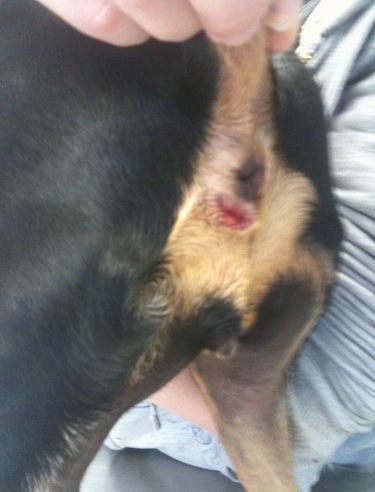
This is how the area appeared after the veterinarian lanced the swollen infection. The shot is a bit blurry but you can see that there is actually a hole left behind from the scalpel.

This is the fluid the doctor drained out of the gland.
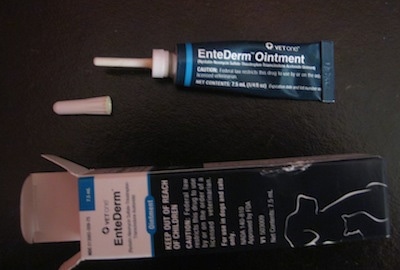
The medication above is what the vet told me to use after he showed me how. I have to admit, this was the most difficult application of any medication I ever had to administer in my entire life. Notice how the tip of the nozzle is long and thin. I had to actually stick the entire tip into the lanced hole and squeeze out the ointment into the gland itself. She didn't fuss or cry out at all, but still, inserting that nozzle deep into her gaping gland like that made me a bit queasy. But, you do what you have to do to keep the infection from spreading and becoming even more serious. I was told to do this three times a day for two more days. I did it twice the first day, and the vet did it once, the very first time. However, by the morning of the second day, the hole had healed shut and I was not about to re-open it just to apply more ointment. The area had healed just that fast.
Today there is absolutely no sign that there had ever been an infection, a cut or a hole there. It is completely healed over with no marks or scars left behind (no pun intended). Twiggy is back to normal, bossing her much larger, older sister around and enjoying using her as a bed.
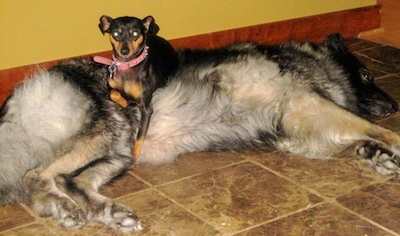
So, if you ever notice any unusual swelling around your dog's anal region, have it checked by the vet. They too may have infected anal glands. I realize this has been a delicate subject to write about, but hopefully it will help someone with their dog one day.

Nine-year-old dog with a ruptured anal gland. This requires vet attention. A shot of antibiotics, along with antibiotic pills to take home, was prescribed by the vet. A dog’s anal glands should be checked regularly to make sure they are properly draining. This dog had her glands drained regularly and has never had a problem, but at nine years old she suddenly did. Anal glands put a scent on a dogs feces. They are located under the anus at 5 and 7pm (if the anus was a clock).
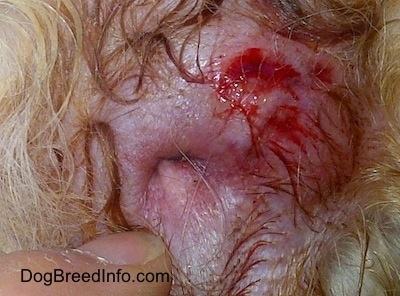
Nine-year-old dog with a ruptured anal gland
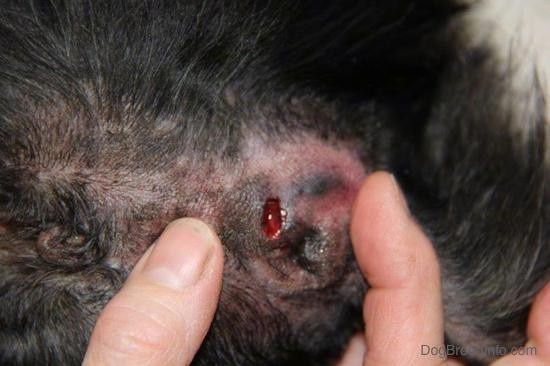
This is an infected anal gland in a 17 year old dog.

This is an infected anal gland in a 17 year old dog.
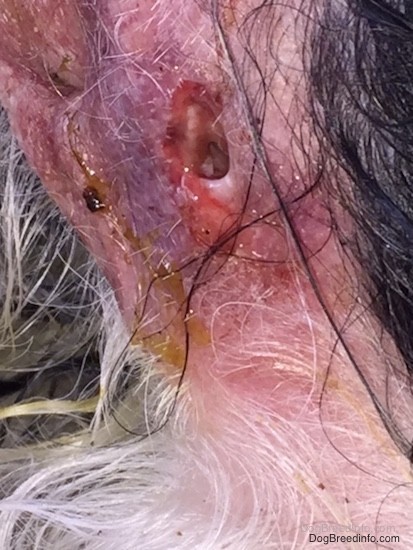
A burst anal gland in a dog. The dog is on antibiotics and it is draining well. Anal glands can flare up very quickly. It's important to get the dog to the vet and on antibiotics right away making sure the infected anal gland is draining. Without proper care the dog may need surgery.
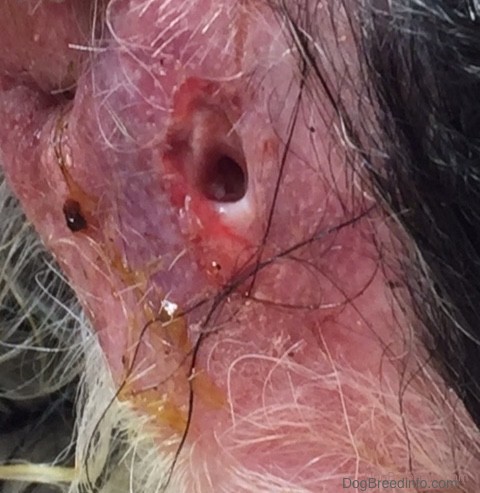
A burst anal gland in a dog.
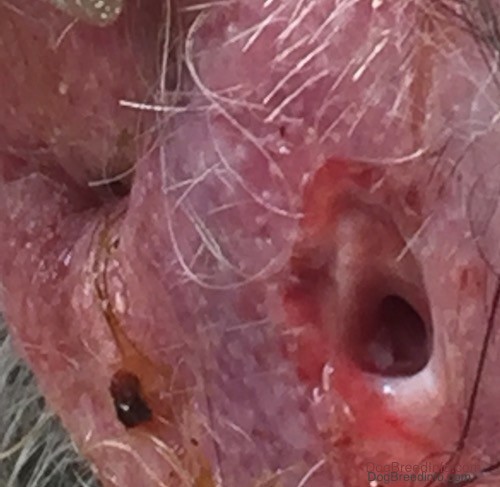
A burst anal gland in a dog.
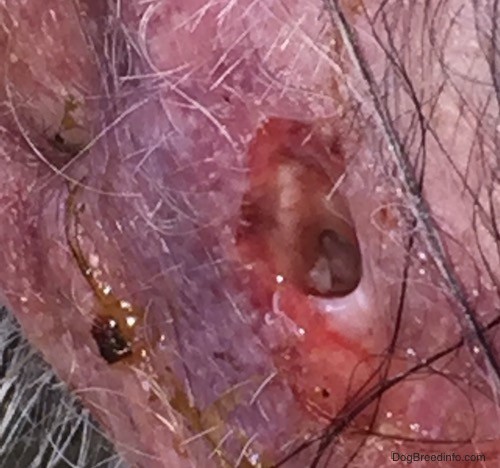
A burst anal gland in a dog.
Written by Laurie Maguire© Dog Breed Info Center® All Rights Reserved